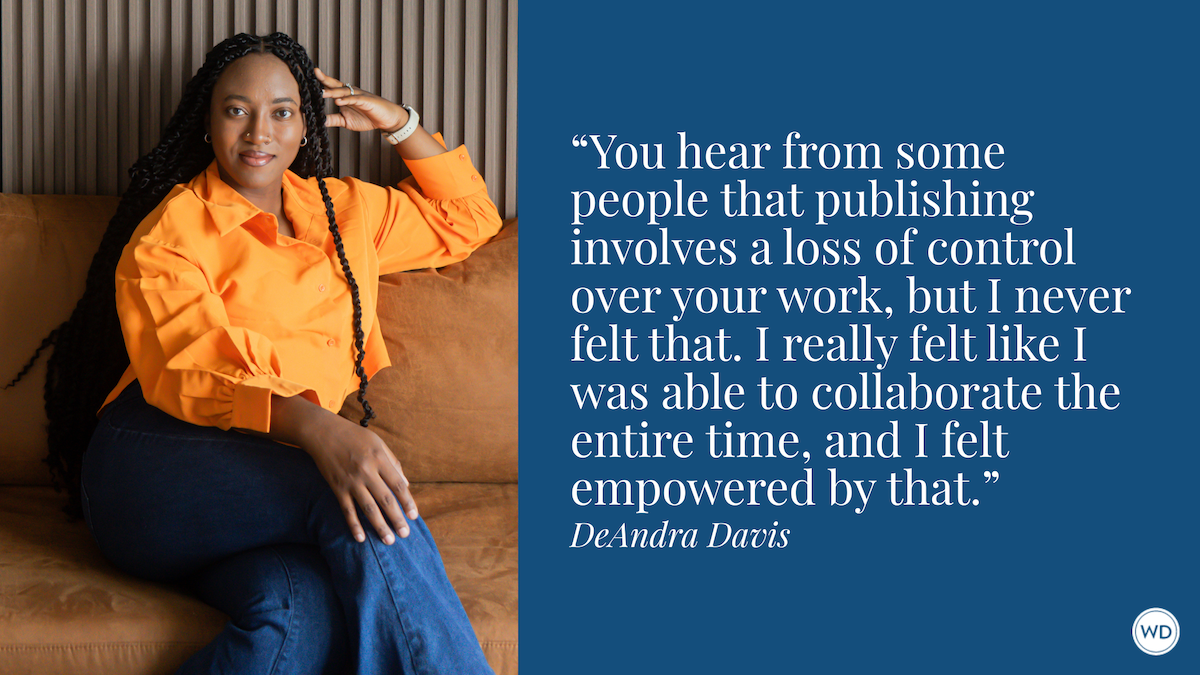3 Tips for Crafting a Character That Can Carry a Series
From planting characteristics early on to understanding the expectations of your genre, author Mia P. Manansala shares 3 tips for crafting a character that can carry a series.
It doesn’t matter the genre or medium, I love a good series. There’s something so comforting about picking up the latest installment and immersing myself in a familiar world like I’m spending time with good friends. So, when I started writing, I knew that I wanted to give my readers the same experience.
To do that, I had to think carefully about my main character since readers would be following them from book to book. These are the things I kept in mind when creating Lila Macapagal, the protagonist of the Tita Rosie’s Kitchen Mystery Series.
Make Them Memorable
Think of your favorite lead series character(s): What makes them memorable for you?
One of my absolute favorite characters is the Kamala Khan version of Ms. Marvel. She’s a Pakistani American Muslim teenager from New Jersey that’s a huge geek and absolutely idolizes superheroes. Her intersecting identities provide depth and roundness to her character, but even if you share none of those identities, she is still wholly relatable. At heart, she’s a normal girl who loves her family, friends, and city, has greatness thrust upon her, and uses that power to protect what’s important to her.
This down-to-earth relatability of an ordinary person who has to do extraordinary things is something I wanted to bring to my amateur sleuth protagonist, Lila Macapagal. Like Kamala, she has various intersecting identities that shape who she is and how the world sees her, but that is not all that she is. Lila is also a girl who loves her family and friends, who protects them as best as she can, but who also makes very human mistakes. She’s someone with a lot of room to grow but has the support system she needs to reach her potential. Just like Kamala.
IndieBound | Bookshop | Amazon
[WD uses affiliate links.]
Give Them a Backstory
Have a detailed idea of your character’s past and what led them to this point in their life but keep things open-ended since you’ll discover more and more about them as the series goes on.
I love when my characters surprise me. Any time I think I know my protagonist inside and out, I discover a new layer to them. This is especially rewarding when I include a throwaway detail in an earlier book, only for me to realize it’s something deeper than I imagined.
For a non-spoiler example, my debut, Arsenic and Adobo, has a random line about Lila being a good singer. I put zero thought into it, I just knew she needed a talent outside of baking, and it seemed like the natural choice. The second book, Homicide and Halo-Halo, revolves around a beauty pageant that Lila competed in when she was in high school. When it came time to delve more into Lila’s past (and her relationship with her deceased beauty queen mother), I remembered that I’d said she was a good singer in the previous book and bam! Her talent portion of the competition was taken care of.
Her singing ability comes up again in Blackmail and Bibingka, the third book of the series. When talking about her old school karaoke song choices, she reveals that her deceased father was a great singer and many of her choices are about her connection to him.
This is also a great example of how choosing a character’s talent/skill can be a great way to enhance a character’s personality/backstory/arc, instead of just making a random choice because it seems cool.
Know Their Genre
Understand your genre/subgenre’s expectations. Every genre has its own specific series expectations, and it’s important to know what they are before starting your book. For example, I write cozy mysteries.
The vast majority of cozies follow the same protagonist in the same world/setting and each book reads as a standalone–you don’t have to read them in order to understand the story. So, the way I crafted my protagonist and various character arcs is massively different from a science fiction or fantasy (SFF) writer whose series has an interconnected storyline that must be read in order.
Ask yourself these questions before you start:
- Is your protagonist a static character who essentially stays the same from book to book, and it’s the people whose lives they enter that change? (Typical of thrillers and westerns)
- Is this a character who grows and changes with each book due to their various experiences? (Typical of SFF and some crime fiction)
- Do the books tell one long interconnected story, or are they essentially standalones?
Mia P. Manansala is a writer from Chicago who loves books, baking, and badass women. She uses humor (and murder) to explore aspects of the Filipino diaspora, queerness, and her millennial love for pop culture.








